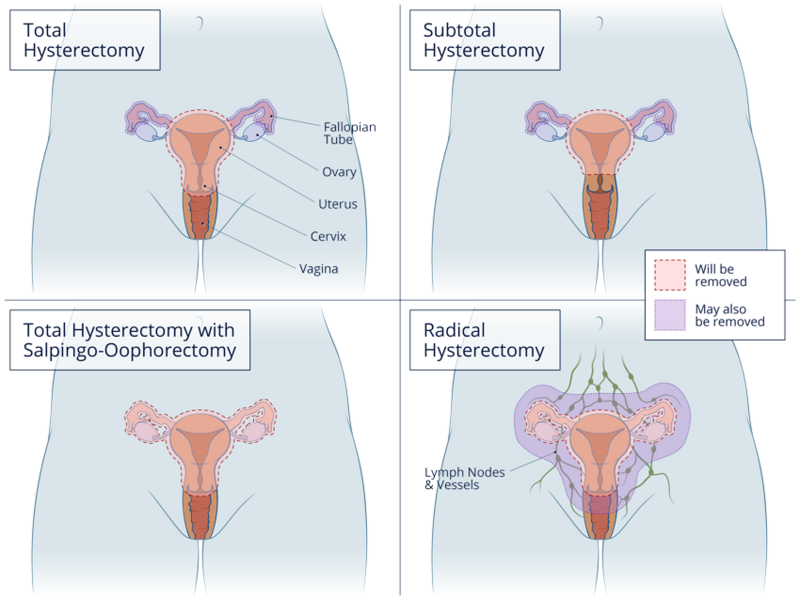Why Do You Need a Hysterectomy
Your doctor may recommend a hysterectomy to treat one of many conditions.
Uterine Fibroids
Uterine fibroids are small, noncancerous growths in the uterus that typically occur during childbearing years. When they grow, multiply, or distort the size and shape of the uterus, they can cause pelvic pain, heavy menstrual bleeding, or cramping. Less common symptoms may include difficulty emptying your bladder or moving your bowels.
Endometriosis
Endometriosis causes inflammation in the lining of the abdomen and can trigger pelvic pain, heavy menstrual bleeding, and infertility.
Uterine Prolapse
Uterine prolapse occurs when the uterus drops into the vaginal canal. It is usually caused by weakened pelvic floor muscles and can lead to back pain, difficulty emptying your bladder or moving your bowel; leakage of urine or feces; painful sex; or pelvic pressure.
Cancer
Uterine cancers, such as endometrial cancer or cervical cancer, may require a hysterectomy if other treatments fail. Sometimes ovarian cancers may require a hysterectomy. Hysterectomy may be recommended if you have genetic mutations that can increase your risk of cancer in the future.
Types of Hysterectomy Surgery
There are several different types of hysterectomy. Your doctor will recommend the type of hysterectomy that is right for you. Their recommendation will be based on your condition, age, and your risk of developing cancer in the future. After a hysterectomy, you won’t be able to get pregnant or menstruate. If you are planning to start or add to your family, different options may be recommended.
Total Hysterectomy
The uterus, including the cervix, is removed. The fallopian tubes are also routinely (but not always) removed at the time of a hysterectomy. This is called a bilateral salpingectomy.
Subtotal Hysterectomy
Sometimes referred to as a supracervical hysterectomy, the uterus is removed, but the cervix is not removed. The fallopian tubes are also often removed during a subtotal hysterectomy. Leaving the cervix means you will need to continue with regular cervical cancer screenings.
Total Hysterectomy with Salpingo-Oophorectomy
The uterus, the cervix, and the ovaries are removed.
Radical Hysterectomy
A radical hysterectomy is considered if you have cancer and chemotherapy or radiation are not appropriate options. The uterus, the cervix, fallopian tubes, and ovaries are removed. Part of your vagina, lymph glands, and other tissue may also be removed.
